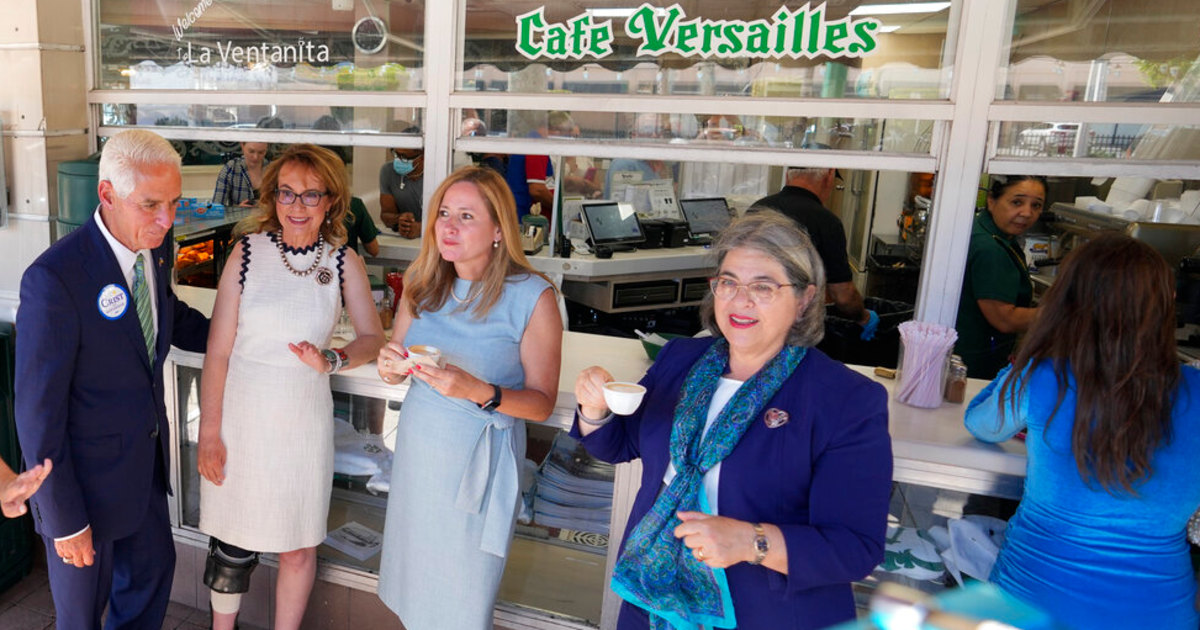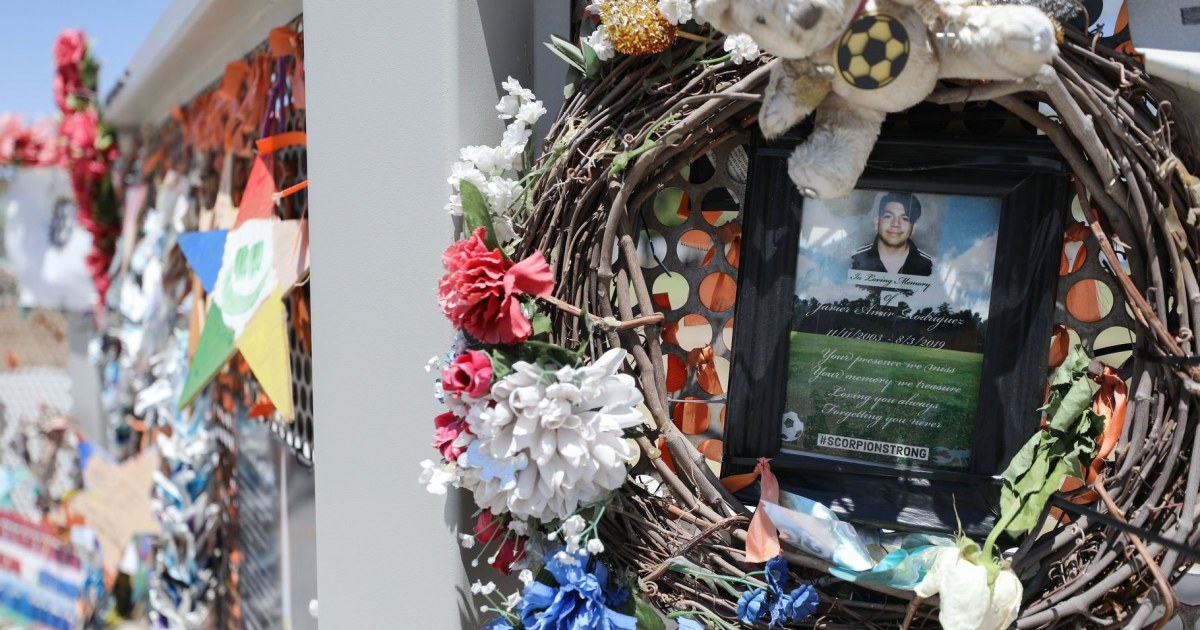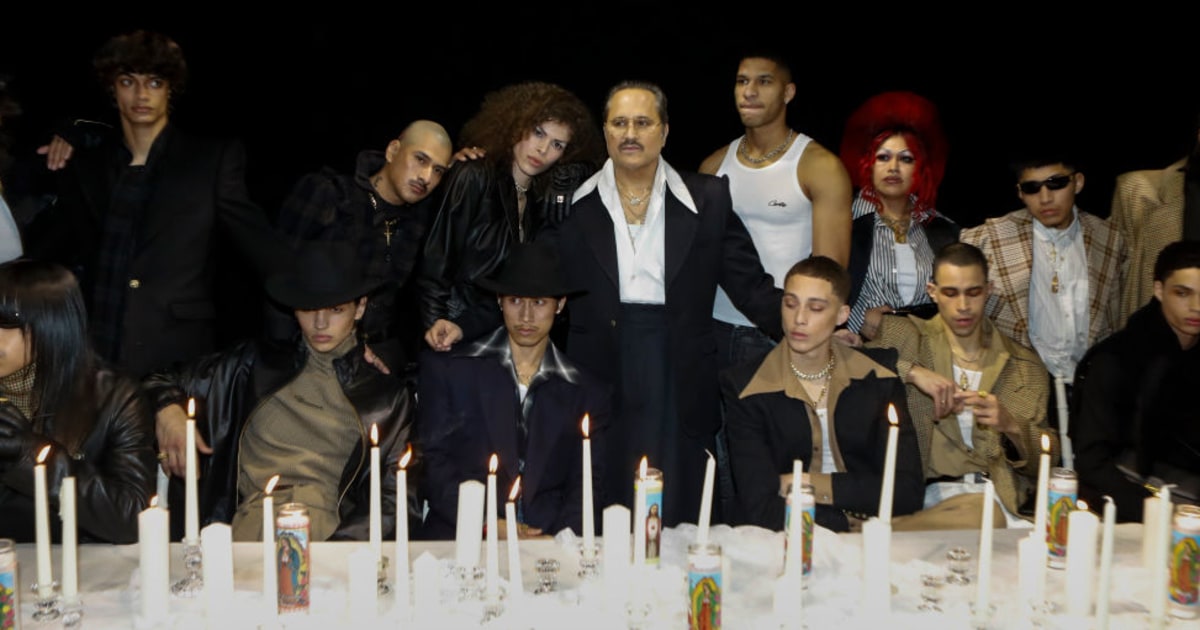Welcome to Axios Latino, a newsletter to tell you every Tuesday and Thursday the stories that have a special impact on the Latino communities in the United States and in Latin America. If you are interested in subscribing and receiving the newsletter in your email (
in English
), you can do so
by clicking here
.
You will always find it in Spanish on Noticias Telemundo.
Topic 1:
Latinas are making their way into the beauty industry
Latinas are a growing segment
of the beauty and personal care industry, and in recent years they have already outpaced non-Hispanic shoppers.
However, many companies are still not targeting them, and Latina beauty company founders have to struggle to attract investors.
Between the lines
: Some companies have begun to diversify their products thanks to brands like Rihanna's Fenty Beauty, which has two Latinos as creative directors and since its launch has had an immense range of shades in its makeup.
But experts say the shade and product ranges of most brands are still a long way from addressing variations in Latino skin and hair types.
Latinas and Latinos are behind 18.5% of the income of the personal care industry in the United States, according to data from the market measurement company Nielsen.
In 2016, Latinas gave a resounding display of their purchasing power: a MAC makeup line inspired by Selena Quintanilla, with shades complementary to the Texan artist's brown skin, sold out in a few hours.
It remains one of the brand's best-selling collections.
By the Numbers
: Hispanic women were the only population group that drove makeup and nail care purchases in 2020 when the industry collapsed by the pandemic.
They spent 13% more than the average shopper on personal care, according to Nielsen.
Annelise Capossela / Axios
Since at least 2015, Latinas of all age groups have spent an average of $ 35-50 more per year than other population groups on personal care items, such as lipstick and hair care products.
They have also shown increased interest in buying personal care products that are natural and environmentally friendly, opening up the opportunity for a huge new market still underserved, according to Nielsen.
Moving Forward
: Several Latinas have set out to establish their own personal care brands that offer a broader range of shades.
They include makeup brands like Treslúce by artist Becky G and Luna Magic, founded by two Afro-Latin sisters, as well as hair care brands like Botánika Beauty or Bomba Curls, both owned by women with Dominican roots.
But similar companies say one of the biggest obstacles remains access to capital to grow and establish themselves, reports the Bloomberg news service.
For example, the Frías sisters, behind Luna Magic, had to rely on funding through the
Shark Tank
television show in
order to launch the brand earlier this year.
Important note
: A handful of Latina beauty bloggers and vloggers have gained a following thanks to their product reviews and tips on how to mix custom shades.
Among them are the military veteran turned
influencer
Dulce Candy, who is Mexican-American, and the
youtuber
Dominican-American Alba Ramos.
Brands have also begun to diversify who they hire as spokespersons, turning to Latina artists like Camila Cabello, Melissa Barrera, and Eva Longoria.
2. A new approach: unlearning machismo
Call centers and group therapy meetings
in Mexico and Colombia offer ways to combat violence against women by targeting the men who perpetrate it.
Why it matters
: The organizers hope that these pilot programs can be established as best practices to curb gender-based violence and thus be replicated throughout Latin America and the Caribbean, the region with the highest rate of sexual violence against women in the world and that it also has alarming levels of femicides, according to the UN.
Most of the countries in the region have adopted public policies to confront this violence by strengthening punishments against those who commit it, but the problem persists.
Pilot programs in Mexico and Colombia focus instead on preventing and unlearning particularly harmful stereotypes, such as how men are taught to always project force and exercise power over women.
Calma Line offices in Bogotá, Colombia Calma Line
How it works
: Programs include the Calma center in Bogotá and the Gendes AC Alcoholics Anonymous style meetings in Mexico City.
Both offer counseling and education.
Calma, run by the Bogotá government, has received an average of 20 calls a day since its formal launch in late September, its administrator Francisco Royett told Noticias Telemundo.
Psychologists on the other end of the toll-free line (01-800-0423614) help men process their emotions and defuse potentially violent situations.
Gendes AC organizes group therapy sessions in which men openly discuss their emotions, and discuss how a non-toxic relationship can be fostered and in what ways they should respect the sexual limits that women set.
The Mexican group also has a telephone line (55-4757-9288) in addition to organizing workshops for children and adolescents, as well as on co-parenting and healthy parenting strategies.
3. Cubans discreetly protest against police deployment
Some Cubans
skipped
school
, placed white sheets outside their balconies and applauded from their homes as part of protests organized for this Monday through social networks.
On video: With violent arrests like this, the Government of Cuba put down a new demonstration
Nov. 15, 202100: 39
Why it matters
: Dissent from home follows the massive protests in early July, and they occurred despite the Cuban regime putting artists, activists and journalists under house arrest and mobilizing security forces to deter people from go out on the streets.
Details
: Yesterday's discreet protests were organized by the Archipelago group, led by the playwright Yunior García (under house arrest), with the motto Civic March for Change.
Activists say there are more than 650 Cubans jailed for political reasons, most after mass trials following the July protests.
General situation
: Chronic food shortages are one of the reasons that have motivated more Cubans to protest this year.
The rationing system has returned through numbered tickets to enter supermarkets.
The regime led by Miguel Díaz-Canel continues to blame the US embargo, which is also criticized by the UN General Assembly as too burdensome.
However, Cuba also had its own customs restrictions, which it lifted after protests in July so that visitors can bring scarce food and medicine to the island.
4. Disadvantage due to language in the face of obesity
Spanish-speaking
children from Latino households in the United States
are more likely to develop obesity than their English-speaking peers, according to a study by the Endocrine Society.
How to prevent childhood obesity, the other pandemic facing the world in the 21st century
Jan. 28, 202104: 33
Why it matters
: Latino and black children already have a higher prevalence of childhood obesity than non-Hispanic whites, leading to lifelong health problems.
This study shows how the language barrier can further expose Latinos.
The study found that obesity among Spanish-speaking Latino children was about 50% higher than that of English-speaking Latino children.
The problem could be because families who primarily speak Spanish at home seem to have difficulty understanding food labels or health care materials, and have less access to medical care, the researchers say.
Spanish is spoken in 13.5% of American households, according to Census data.
5. Summary of key news from Latin America and the Caribbean
The UN Committee on Forced Disappearances
began an official visit to Mexico on Monday, the first after almost a decade of requesting access.
The committee will meet with authorities from the 12 most affected states and with civil society groups that for years have searched for their loved ones in mass graves and cartel “death camps”.
Around 90,000 people are reported missing in Mexico, according to official data.
Families blame both criminal organizations and public officials.
Mothers of the disappeared locate hundreds of human remains in an extermination zone in Mexico
July 16, 202104: 42
Ecuador is on alert after
a prison riot left around 60 dead this weekend in the same jail where 199 people were killed in another riot this September.
Only 80 guards supervised the overcrowded Litoral penitentiary, which houses 8,000 prisoners, some of whom were able to smuggle weapons in, according to local authorities.
The armed forces were mobilized to guard the jail on Sunday.
The Andean nation is currently in a state of emergency due to the violence that the authorities blame on drug trafficking organizations.
6.
🍷 Harvesting from scratch
After they and their parents worked the vines
, Latino families in Napa and Sonoma have risen to the top and aged to become winemakers.
Two Latino families make history and succeed with their own vineyards in California
Oct. 19, 202104: 16
Details
: Amelia Ceja used her salary from harvesting grapes to buy land and eventually established Ceja Vineyards.
Similarly, Lidia and Hugo Maldonado went from helping their parents in the fields to carving out their own cellar that produces around 10,000 cases of wines annually.
They are among the few Latino-owned businesses in California's wine country.
Ceja wines were among those served during President Barack Obama's first inauguration, while Maldonado wines were served at the White House during George W. Bush's presidency.
Context
: Mexican-Americans have helped harvest wine grapes as farm laborers for decades, under difficult conditions, with little recognition and low wages.
Thanks for reading us
.
We returned on Thursday.
Do you want to see any of the most recent previous editions?
Serve, and become a veteran, being Hispanic
The fight for 'green' money
A tradition in transition
Real violence at the border
The brake on Latino education
A Hispanic paradox
The right to die















